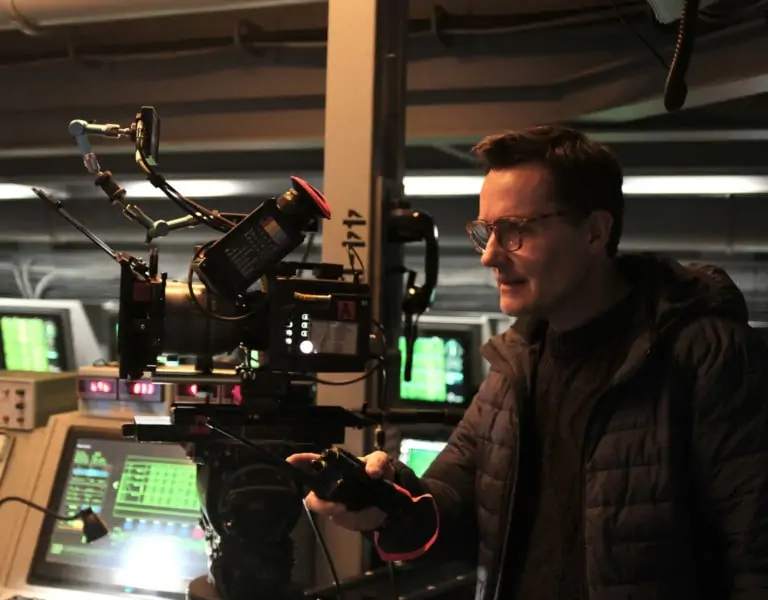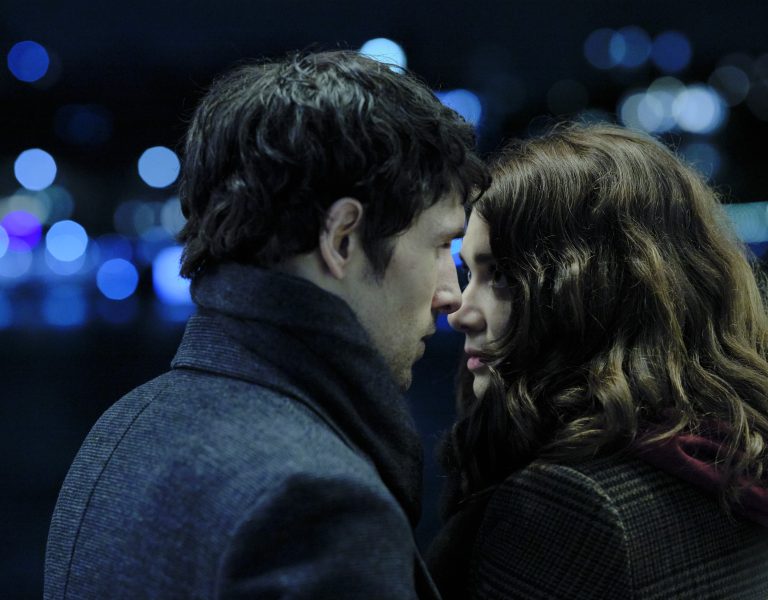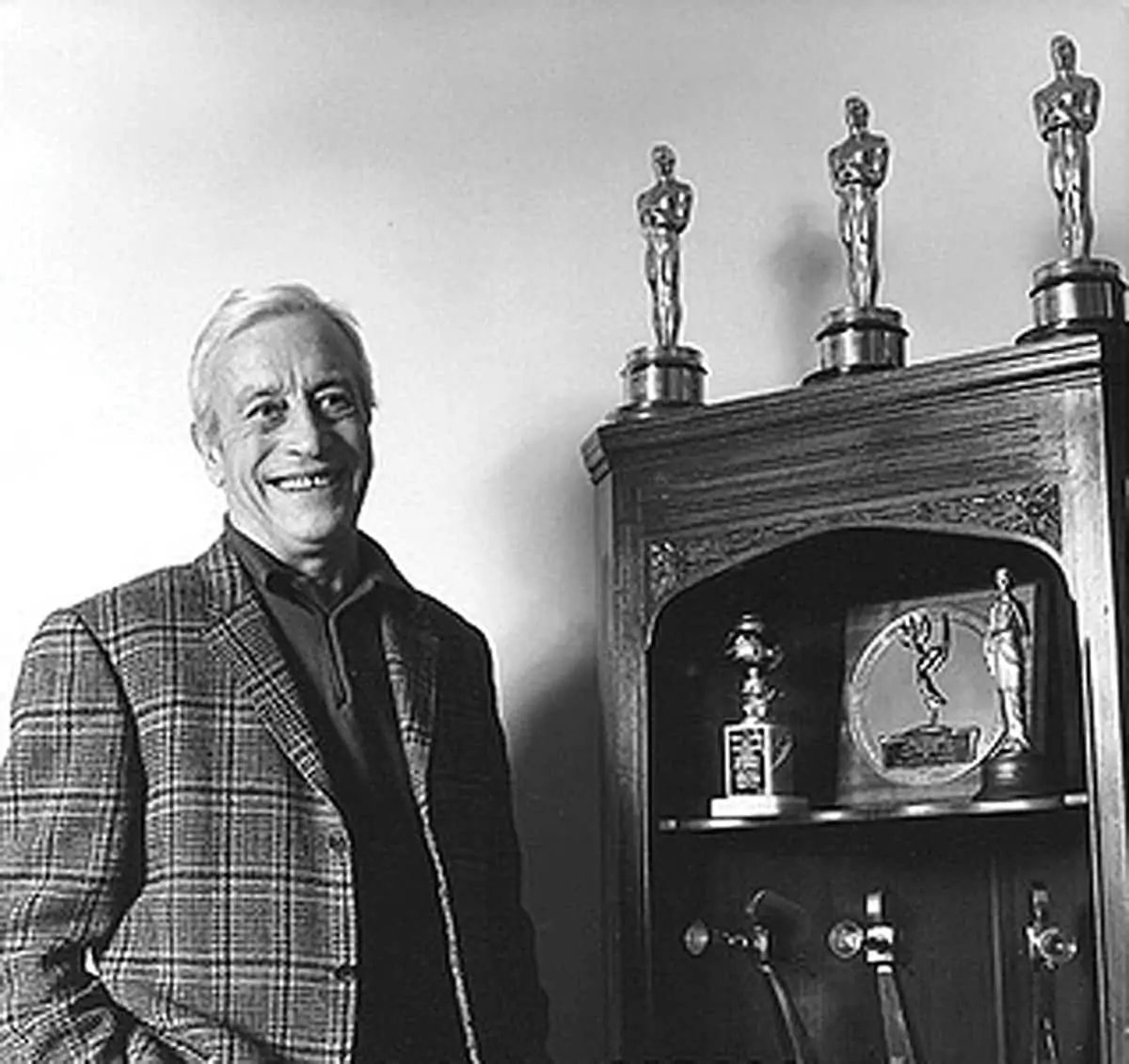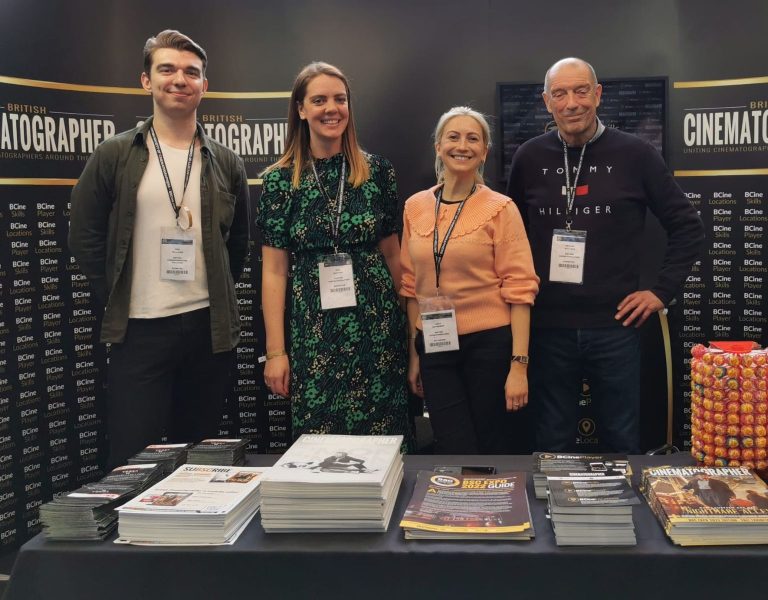Lensing a legend
Matt Gray BSC shares the thrills of stepping into the time-hopping world of Doctor Who as the beloved show celebrates 60 years on the small screen.
David Tennant, Catherine Tate and Russell T Davies have returned to the TARDIS for a series of three extra-special episodes to mark Doctor Who‘s 60th anniversary. The first instalment, “The Star Beast”, sees Tennant’s Doctor reunite with his old companion Donna Noble (Tate) to take on the cute-but-deadly Meeps. DP Matt Gray BSC takes us behind the scenes on episode one, including the challenges of ‘in-vision’ lighting, crafting classical ‘heroic’ compositions, and his fruitful collaboration with director Rachel Talalay.

British Cinematographer: How did you get involved with your Doctor Who special episode? Have you worked on the series before?
Matt Gray BSC: When Phil Collinson approached me to join the Doctor Who team, I was excited and thrilled to embrace a new challenge. I had never worked on the series before and the prospect of delving into the world of Doctor Who was particularly thrilling, especially given my children’s and my own enjoyment of the series, notably when David Tennant was The Doctor.
The return of Russell T Davies as the writer and showrunner added an extra layer of excitement. It was a chance to be part of Doctor Who’s celebrated history and its exciting future.
BC: What appealed to you about lensing the Time Lord’s latest outing?
MG: The Bad Wolf team were enthusiastically committed to revitalising the aesthetic of Doctor Who, with the hope of blending the timeless charm of the 2005 reboot with a contemporary twist. The challenge was to strike a balance between honouring the show’s roots and infusing it with a fresh, up-to-date appeal.

BC: Tell us about your collaboration with your episode’s director, Rachel Talalay. What made your work together so successful?
MG: Collaborating with the renowned director, Rachel Talalay, was an absolute delight and an honour. Her deep love of the subject, vibrant spirit and enormous experience significantly enriched the project. We became close from the outset, and I found myself consistently challenged to match her remarkable intellect and visionary approach throughout the entirety of the project.
BC: Take us back to your initial conversations with the director. What was their vision for the episode and what new ideas or perspectives did you bring to the table?
MG: Stepping into the world of Doctor Who means joining a legacy of extraordinary talent. I had a respect for the show’s rich history enjoyed by countless fans.
Bad Wolf had gathered a skilled team for the relaunch, many had already been on board the project for months.
Rachel and I started by immersing ourselves in the vision of Russell T Davies and the show. We reviewed the concept art by Phil Sims, the production designer, and his team. Then we began the detailed work required to bring our episode to life.
“The Star Beast” is complex, filled with action and elaborate set pieces. Tonally, the aim was to bring a sense of ambition, scale, and magic into the visual style while keeping it grounded and authentic. Striking a delicate balance, we aimed to avoid over-stylising, particularly with colour, using it purposefully and finding motivation for its use in different parts of the story.

BC: Can you run us through your prep? How long did you have and how did you use it?
MG: Undertaking a project as large as Doctor Who demands meticulous preparation. The show involves many exceptionally skilled individuals across all departments, from creating creatures, to designing and constructing intricate sets on sound stages and locations and often involving large-scale lighting design.
As “The Star Beast” marked the first of the 60th specials, our approach was to comprehensively test each key element: the Doctor’s costume, the new TARDIS set, the creature designs, the new sonic screwdriver etc. Each test was presented to the creative teams for discussion and confirmation of the intended direction.
A significant portion of my prep centred on helping to realise the remarkable vision of production designer Phil Sims, particularly in the creation of the new TARDIS.
The new design has a large amount of ‘in-vision’ lighting and the costs associated with rigging and using conventional film lightings were challenging. With the help of specialist lighting designer Matt Dunford and pre-rig gaffer Pete Chester, we explored smaller bespoke LED units.
After conducting extensive testing and then scaling up the designs, we were able to achieve precise DMX control over every lighting component within the TARDIS. This approach not only created a self-sufficient set capable of long-term operation, but also unlocked exciting visual potential for the episode.
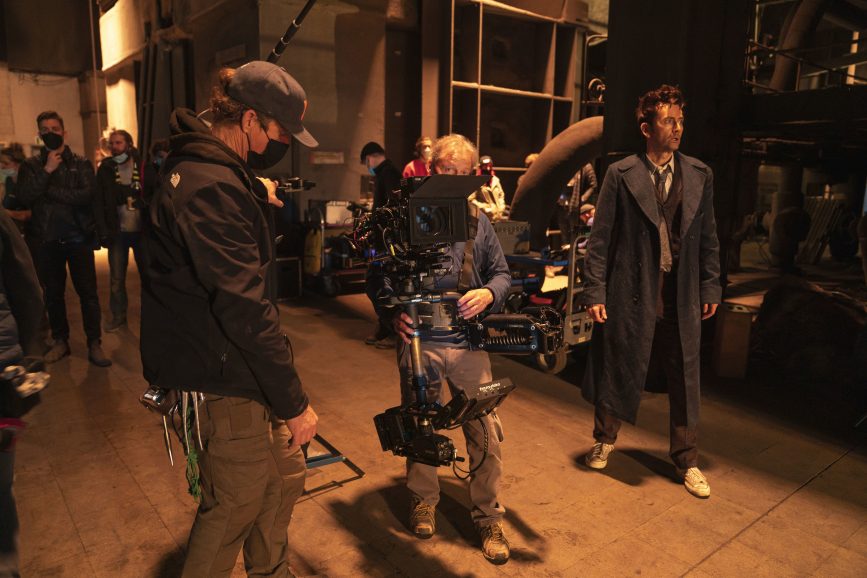
BC: When and where did filming take place?
MG: Filming took place over the summer of 2022 on location in London and Cardiff as well as Bad Wolf Studios in Cardiff.
BC: What did your camera package comprise and why was this kit chosen?
MG: Exploring various camera systems during testing, I ultimately opted for the ARRI Alexa Mini LF. As we had a commitment to deliver content in 4K HDR, it was imperative to select a system that not only showcased superb image quality, but also provided a robust foundation to meet the demands of the series.
In tandem with this camera, we used full-frame Zeiss Supreme Prime Lenses. This pairing was designed to achieve beautiful clarity of image without undue sharpness.
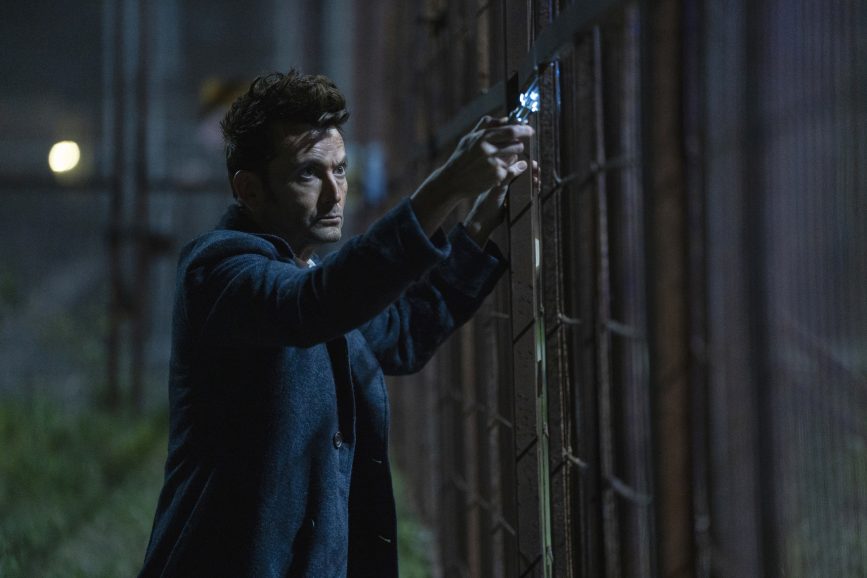
BC: How did you use framing and composition to aid the storytelling?
MG: “The Star Beast” follows the style of family adventure movies from the ’80s, featuring plenty of action and thrilling set pieces. Given the complexity of the storytelling, clarity was paramount. Our focus was on simple, classical ‘heroic’ compositions, ensuring the camera style didn’t overshadow the story.
We also recognised that the story’s pacing would be refined in the edit, so we opted for less elaborate developing camera moves. Instead, we worked with talented camera operator, Martin Steven, to utilise dynamic and fast-paced Steadicam movements, and multiple camera cover.
BC: How did you collaborate with the VFX team to achieve the show’s visual splendour?
MG: Visual effects (VFX) played a crucial role in richly expanding the world of the story and it was an important part of a much larger approach that included production design, pre-visualisation, storyboarding, creature construction, physical effects, and lighting.
Coordinating and integrating these elements was key to tackling the story’s challenges. My involvement was to help with this smooth collaboration, trusting in the advice of all the teams and helping to provide them with the tools they needed, to bring the story to life in a visually cohesion way.
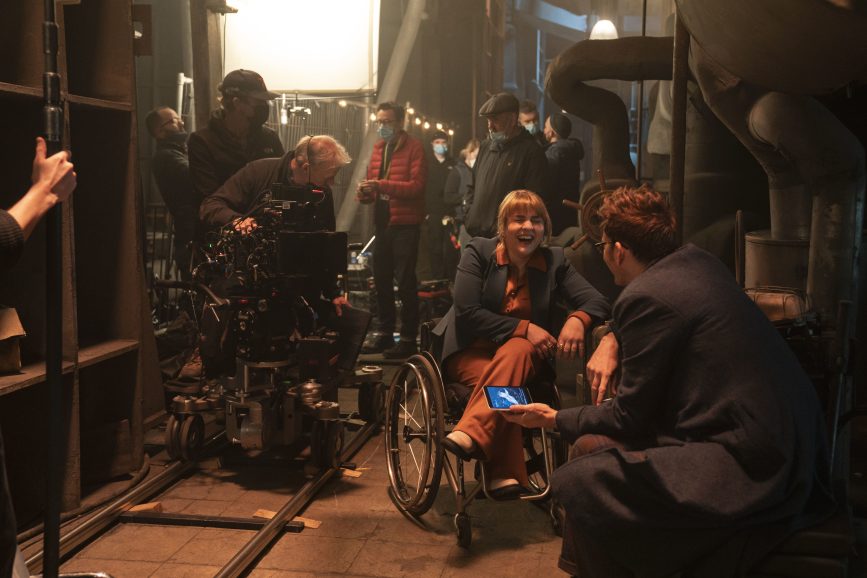
BC: What was the most technically challenging scene/sequence/shot to capture and how did you pull it off?
MG: In projects like Doctor Who, almost every scene poses technical challenges. One particularly demanding task was orchestrating a night street battle involving three opposing forces, two different integrated sets, SFX exploding vehicles, alien invaders, soldiers, stunt performers, different types of creatures, VFX green screen and our main cast.
Given the summer shooting schedule and limited available night hours, coordinating the shoot resembled a complex chess game. Thanks to the exceptional skills of our first assistant, Scott Bates, we successfully navigated this scene over two busy nights.
BC: Who did the grade and how involved were you in it?
MG: We were very fortunate to have Gareth Spensley as the colourist on Doctor Who and I was able to be closely involved. We employed a LUT designed to expand the tonal range while retaining shadow detail. My goal was to let elements fade into the shadows without creating an excessively stylised and contrasty look. Gareth, with his skill and deep understanding of past Doctor Who series, embraced the opportunity to explore a fresh approach and did a wonderful job.

BC: What did you enjoy most about the shoot?
MG: Cardiff is an exceptional production hub, boasting many talented individuals. I was fortunate to help assemble and work along-side an incredibly skilled and dedicated camera and electrical team that went on to shoot subsequent episodes of Doctor Who.
Exploring time and space with the Doctor Who team was a fantastic opportunity, and I have wonderful memories of the people, the shoot, and the overall production experience.
Matt Gray BSC is represented by Casarotto Ramsay & Associates. His next project, Mr. Bates vs. The Post Office, arrives on ITV in early 2024.

